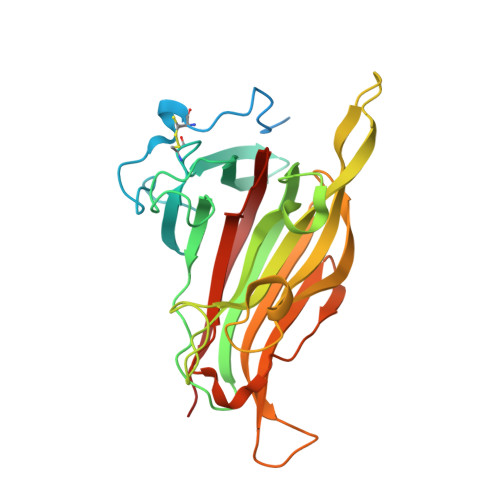Structural and functional characterization of PL28 family ulvan lyase NLR48 fromNonlabens ulvanivorans.
Ulaganathan, T., Banin, E., Helbert, W., Cygler, M.(2018) J Biol Chem 293: 11564-11573
- PubMed: 29875159
- DOI: https://doi.org/10.1074/jbc.RA118.003659
- Primary Citation of Related Structures:
6D2C, 6D3U - PubMed Abstract:
Ulvan is a complex sulfated polysaccharide present in the cell wall of green algae of the genus Ulva (Chlorophyta). The first ulvan-degrading polysaccharide lyases were identified several years ago, and more were discovered through genome sequencing of marine bacteria. Ulvan lyases are now grouped in three polysaccharide lyase (PL) families in the CAZy database, PL24, PL25, and PL28. The recently determined structures of the representative lyases from families PL24 and PL25 show that they adopt a seven-bladed β-propeller fold and utilize the His/Tyr catalytic mechanism. No structural information is yet available for PL28 ulvan lyases. NLR48 from Nonlabens ulvanivorans belongs to PL28 together with its close paralog, NLR42. Biochemical studies of NLR42 have revealed that it can cleave ulvan next to both uronic acid epimers. We report the crystal structure of ulvan lyase NLR48 at 1.9-Å resolution. It has a β-jelly roll fold with an extended, deep, and positively charged substrate-binding cleft. Putative active-site residues were identified from the sequence conservation pattern, and their role was confirmed by site-directed mutagenesis. The structure of an inactive K162M mutant with a tetrasaccharide substrate showed the substrate occupying the "-" subsites. Comparison with lyases from other PL families with β-jelly roll folds supported assignment of the active site and explained its ability to degrade ulvan next to either epimer of uronic acid. NLR48 contains the His/Tyr catalytic machinery with Lys 162 and Tyr 281 playing the catalytic base/acid roles.
Organizational Affiliation:
Department of Biochemistry, University of Saskatchewan, Saskatoon, Saskatchewan S7N 5E5, Canada.


















